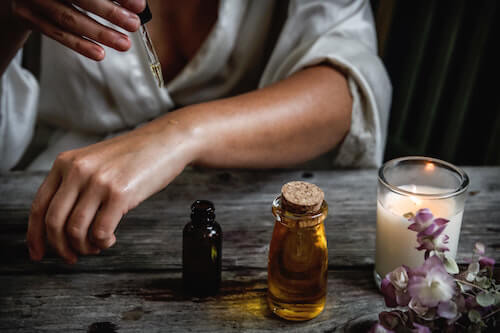When life gets busy and stressful, it’s very easy to look outside of our bodies for someone, something or anything to make us feel better.
This could be through a partner who can look after us and give us everything we need, a quick high such as coffee and alcohol or it’s very easy to pop a pill.
These are all temporary fixes and are not truly fixing the root cause of the problem. In my opinion, the first and foremost important thing to practice is self-acceptance.
You are so uniquely you in all of your strange and mysterious ways:
- Your Vata might see you make quick and spontaneous decisions that you may just regret later.
- Your Pitta might see you drive to achieve and succeed at whatever cost it is to your health and your happiness.
- Your Kapha might see you a little lazy and choose to lay in bed all weekend rather than do anything else.
This is all perfectly okay. Accept yourself for everything you are now and are becoming.
Once you have accepted yourself, it’s much easier to love yourself. And once you love yourself, you naturally find ways to care for yourself in a much healthier and longstanding way. You begin to choose what’s best for you over everything else.
Below I share my top five practices for practicing Ayurvedic self-care for whenever you feel like life is getting on top of you.
Self-Abhyanga
Self-Abhyanga or Self-Massage is way of nurturing yourself every single day. According to ancient Ayurvedic texts, those who practice oil massage regularly are not affected as much by strenuous work. In fact, it almost creates a barrier from the external environment. Furthermore, it is known to improve lymphatic and blood circulation, create lustre of the skin, naturally tone the body and is a wonderful anti-aging agent.
Generally, coconut oil is used in the Summer-time for its cooling effect on the body and sesame oil in Winter-time for its warming effect. Be sure to always use high-quality, cold-pressed and organic when possible and leave it on the skin for 10-50 minutes.

Start by applying oil over your entire body including the scalp. Generally, you want to begin with the head and neck, and then move down to the chest, stomach, back, arms, hands, and finally the legs and feet. Massage the oil in with long strokes on the limbs and circular motions around the joints.
Once you have finished, wash or wipe off the oil to remove toxins that have been pulled out through the skin.
Yoga and Meditation
It is so important to exercise the body and the mind as part of your daily routine.
Any type of exercise (generally yoga, swimming and walking are the best according to Ayurveda) is best done in Kapha time (6-10, either morning or evening) as this is when muscular and structural strength naturally increases. As Kapha is heavy and dense in quality, we want to offset the laziness and lethargy that can often be in the body during this time by bringing more intensity, stimulation and a little bit of sweat.
It’s always nice to finish with a meditation to purify the mind and set a clear intention for the day ahead.
Ayurvedic Self-Care Facial
An Ayurvedic self-care facial is sure to promote inner beauty, outer beauty and long-lasting beauty. It not only assists with a healthy and clear complexion, but will make you feel more calm, centered and relaxed on the inside. Overtime, the nourishment from the ingredients will also help you to look and feel younger as well.

If you don’t have someone who does Ayurvedic facials nearby, there are wonderful and simple recipes you can do on your own. My personal favourite ingredients are chickpea flour, turmeric and rose.
Chickpea flour is a great base for a scrub or face mask. It exfoliates, moisturises, and supports smooth and firm skin while removing oiliness and unwanted facial hair.
Turmeric is a common cooking ingredient that is known for its blood cleansing properties and ability to support circulation. It also enhances the condition and appearance of skin topically and internally.
Rose petals or water work as an excellent skin toner for all skin types and help to control excess oil, unclog pores and maintain moisture.
Light Dinner
Dinner time should always be the lightest meal of the day and taken 2-3 hours before bedtime.
Try to favour cooked vegetables, kitcheree’s or simply boiled milk if you’re not hungry over heavy foods such as meat, cheese and bread. Heavy foods are best eaten at lunch as they are harder on the digestive tract and can be a cause for weight gain if eaten in the evening.
Sharing food with those you love most, whether that is family, friends or partner certainly can make the experience more enjoyable. However, if you are alone, remember to stop what you are doing, pay gratitude and thanks, and feel your food transform inside of you. Ayurveda recommends not to eat when feeling emotional.
Evening Bath
The last couple of hours of the day as bedtime draws near should be for unwinding and focusing on calming activities.

Drinking a herbal Vata pacifying tea is designed to help slow down the body and mind, so is taking a warm herbal bath before bed. Try adding some Epsom salts or calming lavender essential oil to really feel at love and peace with yourself.
